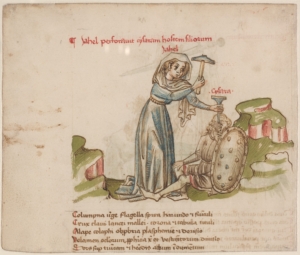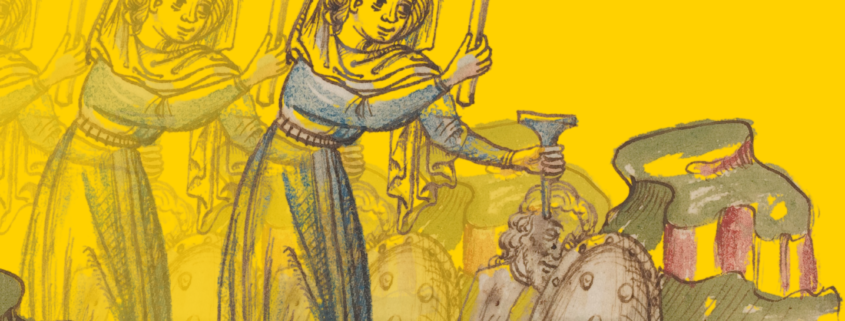Narrow Your Focus: Using a Matrix to Improve Art Marketing and Sales
Time in the studio is typically not the hard part for professional artists. But finding the time is. Marketing, generating interest, and pursuing new opportunities (grants, residencies, shows, sales) are the parts of sustainable art business that feel like a grind. If you’re overwhelmed by the pressures of online marketing, you’re not alone. Social media, email campaigns, your website—it can feel like you need to be everywhere. But the truth? You don’t. The key to getting a practice off the ground is to narrow your focus on what actually helps you improve art marketing and sales.
Here’s where a Focus Matrix can help.
Start With Clear Goals
First things first—what do you want to achieve? Are you looking to build followers, increase sales, or just get your work in front of more people? You need clear goals to know how to focus your time and improve art marketing and sales efforts.
Marketing Goals: Growing your leads, engagement, and getting people to act (signing up, clicking, buying).
Sales Goals: Turning those leads into buyers and building connections that convert.
Make them specific. Not “more followers,” but “100 new followers by the end of Q4 2024.” Not just “more sales,” but “sell 10 pieces through my online store by the end of the month.” The clearer, the better.
What’s the Focus Matrix?
The Eisenhower Matrix (aka Impact-Effect Matrix) was originally used by President Eisenhower to prioritize tasks based on urgency and importance. This “Focus Matrix,” adapted from this, is a decision-making tool that helps identify where to narrow your efforts. We adapted this concept to art business activities based on two criteria:
Performance: How well is this working right now? Is it delivering results that improve art marketing and sales?
Impact: How much does or could this contribute to your goals now or in the future?

Here’s how the quadrants break down and some examples we commonly see for each, (assuming, for example, that the primary goal is to make sales—these may differ for you):
- High Impact / High Performance: This is where you want to be. These are channels where your efforts are working and directly generating sales. This might be in-person meetings, gallery events, or your email list where people respond and buy.
- High Impact / Low Performance: Lots of potential, but not delivering yet. Maybe your website shop is set up well, but it’s not getting the traffic you need to sell prints of your work.
- Low Impact / High Performance: These work but won’t change your world. This could be that local art show you enjoy going to but rarely make a substantial sale. Or, if your goal is more sales, it could be your Instagram—you’re getting tons of followers, but it’s not translating to impactful sales, and it’s not clear how it would.
- Low Impact / Low Performance: The time-wasters. A Twitter account for visual artists that gets little engagement. Ads that don’t create conversions. A specific gallery/broker relationship that takes tons of maintenance and produces no impactful sales.
Apply the Focus Matrix to Narrow Your Efforts
Take stock of everything you’re doing. Instagram, LinkedIn, Etsy, email newsletters, blog posts, local fairs—map it all out on your Focus Matrix. This will help you see where you can improve art marketing and sales by identifying what’s working and what’s not.
If your goal is more sales (hopefully more specific than that), ask yourself:
- Where are sales coming from?
- Which platforms are paying back the most on your investment?
- What’s draining your energy without giving much back?
Create an Action Plan
Now that you’ve plotted everything out, it’s time to act:
High Impact / High Performance: Put more energy here. If Instagram is driving sales, invest in better content or engage more with your followers. If email marketing works, send more newsletters. For example:
- “Post three engaging Instagram stories per week highlighting the behind-the-scenes process of my art.”
- “Send a biweekly email newsletter featuring new artwork, upcoming events, and exclusive discounts to my subscribers.”
High Impact / Low Performance: Worth your time to fix. Optimize your website for SEO. Commit to posting regularly to drive traffic to your site. These areas have potential if you put in the effort to improve art marketing and sales strategies. For example:
- “Invest time in optimizing my website store with SEO keywords related to my art niche.”
- “Create one post a week about a piece or product available on my website.”
Low Impact / High Performance: Maintain these with minimal effort. Attend local art shows that give a good return or are easy to go to, but no more. Start recycling content on your social media accounts.
Low Impact / Low Performance: Cut it out. Free up your time and energy. Don’t be afraid to drop that platform that isn’t working.
Prioritize Your Action Plans that Improve Art Marketing
Start with High Impact / High Performance first. That’s where you’re already seeing results and have the best chance to improve art marketing and sales even more. Then, move to High Impact / Low Performance—these could be big winners with more effort. Don’t get stuck on low-impact tasks; they’re distractions.
Side note: Be honest with yourself about your motivation to invest time into low-impact channels. Does social media impact your sales or provide a confidence booster? Do you feel respected among peers? Neither of these are bad things, but identify exactly how they impact your goals before investing too much time blindly.
Final Thoughts
The Focus Matrix isn’t just about eliminating what doesn’t work—it’s about putting more energy into what does. Regularly revisit this process, refine your action plan, and watch how much more intentionally you can improve art marketing and sales.
If you want more guidance on how to apply this to your work, join us at one of our coworking sessions or schedule a chat. Let’s build a focused, effective path towards a sustainable art business and practice.
Banner art credits: Jael Killing Sisera, c. 1460 is a pen and ink with watercolor on laid paper piece by an unknown Austrian 15th century artist. According to the book of Judges, Jael invited Sisera, the commander of an oppressive army into her tent and killed him with a tent stake. The demure pleasure depicted in what is otherwise a graphic story, captures the ideal spirit for letting go of low-impact channels wasting valuable energies.



